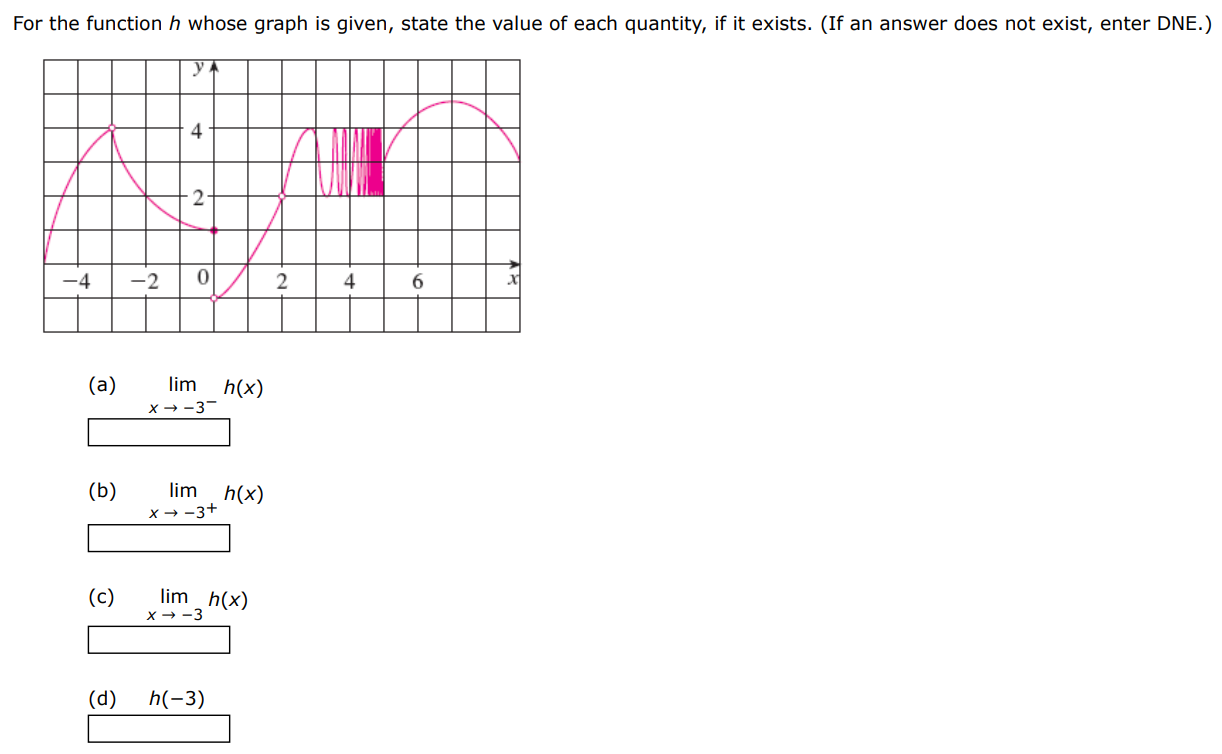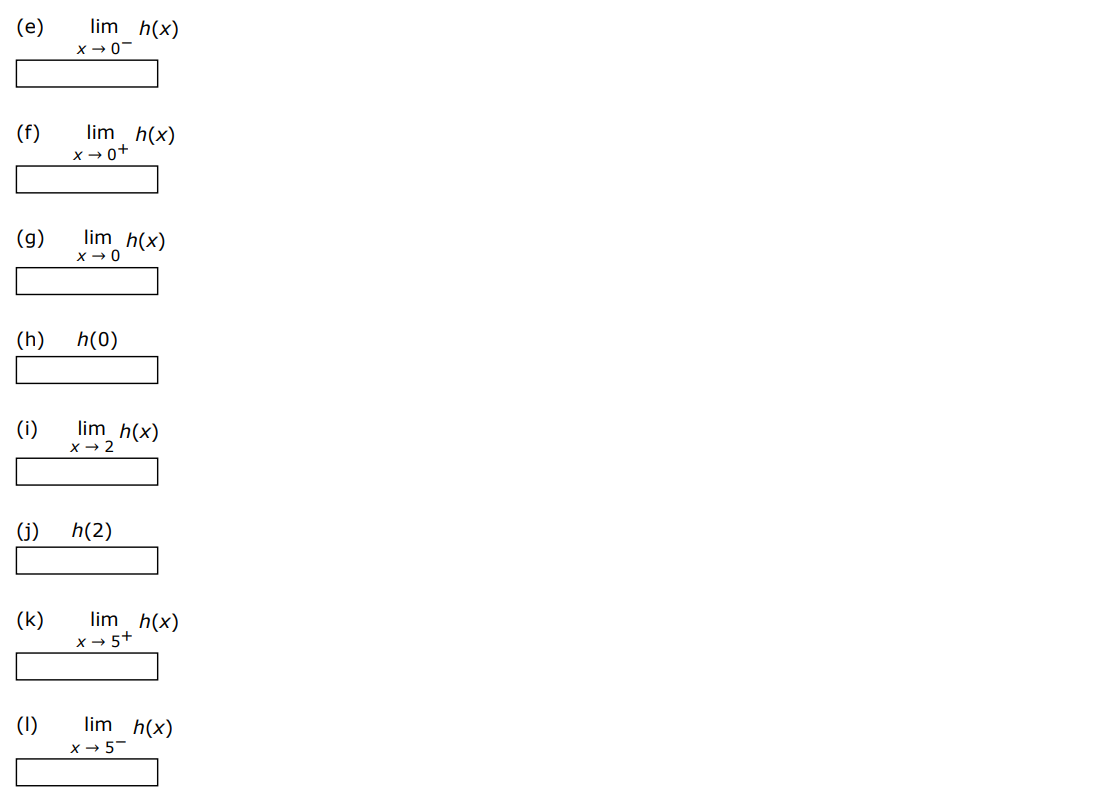For the function h whose graph is given, state the value of each quantity, if it exists. (If an answer does not exist, enter DNE.) (a) limx→−3−h(x) (b) limx→−3+h(x) (c) limx→−3 h(x) (d) h(−3) (e) limx→0−h(x) (f) limx→0+h(x) (g) limx→0 h(x) (h) h(0) (i) limx→2 h(x) (j) h(2) (k) limx→5+h(x) (l) limx→5−h(x)

